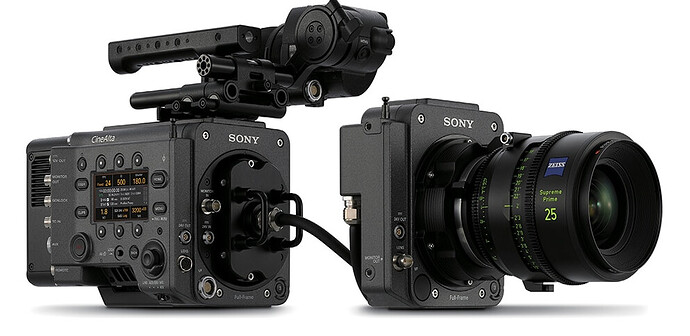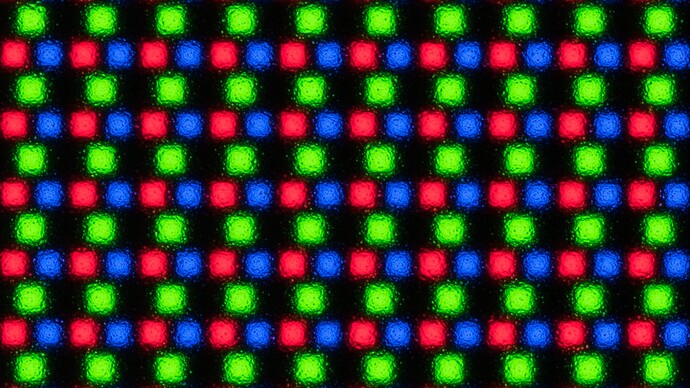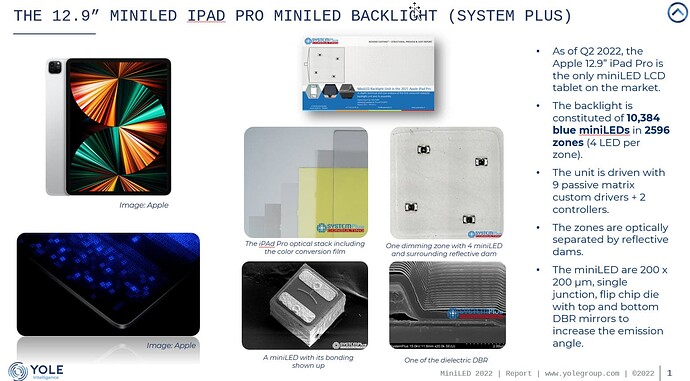Sony has a new master reference monitor BVM-HX3110 capable of 4,000 nits ( my flagship Sony TV can do 3,500 nits, which is double what any OLED can do )
this new Master Reference monitor is significant because the old one it replaces ( also Sony ) was OLED and not capable of this brightness …
that means that soon people will be able to color grade movies to a brightness that can actually make use of my TV’s capability ( and that OLEDs cannot reproduce )
i already wrote ad nauseam about how OLED is not flagship tech. instead:
Micro LED > Dual Cell LED > Mini LED > FALD ( my TV ) > QD OLED > OLED > LED
so really OLED is one step from the bottom, of course that is assuming all the LED tech is implemented properly, which it never is except in Flagship Sony products.
in practice on other hand the Mini-LED screen on my ASUS laptop is so bad it’s almost worse than a CRT from 20 yeas ago, but then it’s still a good screen by laptop standards, so i am not complaining. Asus prioritized response time ( for games ) and battery life over visual quality on that screen. There is barely any processing taking place while my Sony TV uses massive processing ( which it is famous for ) that adds what feels like almost a second of delay in “cinema” mode, and even in Game mode it’s still about 10 times the delay that Asus gaming laptop has on its screen ( something like 30 milliseconds vs 3 milliseconds ).
so yes in practice an AVERAGE OLED is better than an AVERAGE not OLED, but that would be like saying electrified vehicles are slow because the most popular electrified vehicle is a Prius. i don’t care about average.
anyway back to BVM-HX3110 - it doesn’t say what tech it uses in the specs but we know it is a dual cell LED monitor. that means it has two LCD screens stacked on top of each other with the rear screen doing what local dimming does in FALD and Mini-LED screens, but with much greater precision.
the reason Dual Cell isn’t used in consumer products is because it doesn’t pass European Energy Regulations. the BVM-HX3110 for example states power consumption of up to 610 watts, in a 30" screen … by comparison a consumer level 85" TV consumes about 400 watts.
so a 30" dual cell master reference monitor consumes more power than a 85" consumer level TV. did you really think Klaus Schwab would allow you to have this tech at home ? it is simply not a right tech for home use, but it is perfect for a Master Reference Monitor, which is almost certainly not subject to European Consumer regulations since only a handful are produced for use in Hollywood studios etc.
so we have two concurrent developments
1 - Sony Master Reference monitor goes from OLED to what is basically like an ultra-high-end version of a Mini-LED screen, that is to say it’s an LCD screen with ultra advanced backlight.
2 - Sony 2024 model year consumer TVs put Mini-LED as the flagship ( Bravia 9 ) with no new flagship OLED model this year.
additionally there was never a 8K OLED from either Sony or Samsung - only from LG, who didn’t have competitive tech outside of OLED. furthermore in all TV tests Sony always wins and Samsung always comes in second, with the 3rd place being a toss up between brands like Panasonic, Phillips, LG etc.
what does all this mean ?
it means that:
1 - OLED still struggling in 8K arena
2 - even as OLED is getting brighter, being bright is a struggle for OLED so much so that Sony Master reference monitor dumped OLED tech and there are no new flagship OLED models in sony 2024 line up.
AND IF THAT WASN’T BAD ENOUGH
sony now has a new “Bravia 8” OLED which being “8” is clearly positioned BELOW “Bravia 9” which is a Mini-LED.
and Bravia 9 isn’t even 8K - it’s regular 4K, which means when the new Mini-LED 8K sony hits the Bravia 8 OLED will actually be TWO STEPS below it.
the message from Sony is clear - FUCK OLED !
which is something i been saying for a while and everybody was like " what do you mean OLED isn’t best ? everybody knows OLED is best ! " at which point i had to remind myself that people are dumb, and speaking to them is of no use.
reminds me of when i had Rogue and Eleiko bars at home ( i sent the Rogue back ) and i tried to explain to Bros on bodybuilding.com that Rogue bars are trash and they were like " what do you mean ? Rogue bars are the best ! " yes they are the best if you never tried anything better … Cadillac is also the best if you never drove Porsche.
The only weight lifting brand i would even consider besides Eleiko ( made in Sweden ) is Uesaka ( made in Japan ). I have both in my home gym, but i only have one Uesaka item which is super unique and not offered by any other company - namely special bumper plates for warming up and rehab that are made from FOAMED URETHANE. they are the smoothest bumpers i have ever used - they drop silently and do not bounce - basically the holy grail. of course this is also the most expensive way to manufacture a weight plate because pound for pound Urethane is more expensive than any material used to make weights - even Commercial weights only use urethane COATING ( to protect the steel underneath and to make the plates quieter ) on the surface while this Uesaka bumper is MADE OUT OF urethane entirely, and made in Japan on top of that - how could i pass it up ?
actually i also remember now i have some small Uesaka plates ( like 1 kilogram ) in the basement, that look like Jewelry and even an Ivanko plate machined from stainless steel ( it’s like 1/4 kg ). i never used those little ones but i wanted them for my collection.
i have a bunch of Rogue stuff as well but not proud of any of it - it’s all very crude and basic. just barely good enough to get the job done.
anyway back to TVs …




